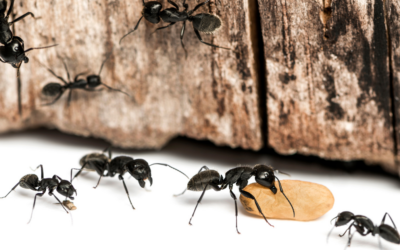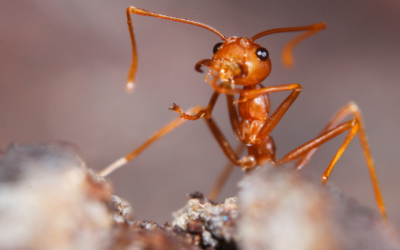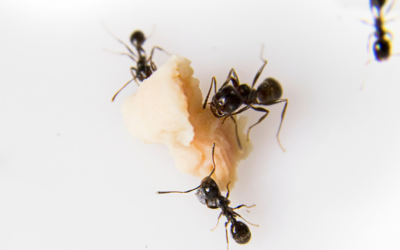Flying ants, also known as alates, can be a real nuisance. They can resemble termites because they are both flying insects and relatively the same size. But how can you tell the difference?
How can you tell them apart, and more importantly, what do you need to do if you have an infestation?
What are flying ants?
There are over 1000 types of ants, all of which at some point grow wings and can be both male and female. In Texas, ants usually swarm in the springtime or start of summer. Carpenter ants resemble termites, which can often cause concern for homeowners.
Much like termites, they swarm when trying to start a new colony. Flying ants have mandibles, which means they can bite; however, it is extremely rare, as they only have one thing on their minds—mating.
How can I tell a winged ant and termite apart?
As previously mentioned, flying ants and termites can look very similar. So it’s important to be able to distinguish between the two.
If you’re not sure if you’re looking at a flying ant or a termite, catch one and pay particular attention to its body. Termites have segmented bodies of equal width, whereas flying ants have narrow waists.
Flying ants have “hinged” antennae; termites have straight antennae. The front wings of flying ants are longer than their back wings.
Are flying ants dangerous?
Generally speaking, they are not dangerous, although we don’t recommend walking directly into their swarm. They can bite—after all, they are regular ants with wings that only fly during mating season. However, they are solely focused on mating, not harming humans.
Like termites, though, they can be destructive to property. They chew through wood just like a termite. And if they go for an extended period without being noticed, they can cause extensive damage to your home. So take precautions if you find that ants are swarming around your home.
How do I get rid of flying ants?
If the ants have reached the inside of your house, for immediate relief, you can vacuum them up. Be sure to take the vacuum bag outdoors and away from your property when you empty it. This is a temporary solution only.
If you’ve found that these pests have invaded your home or property, it’s best to call a pest control expert to help. In the meantime, inspect your property and look for decaying wood. Also, keep in mind ants behave just like any other insect or animal—they need a source of food and water.
Be sure to inspect your property for standing water. And if you have any food that’s accessible to these pests, be sure to dispose of it.




